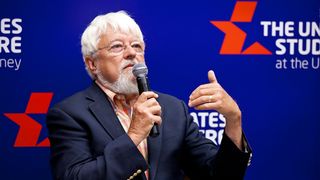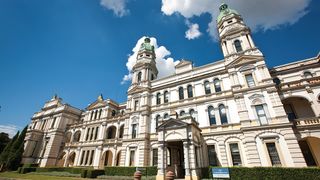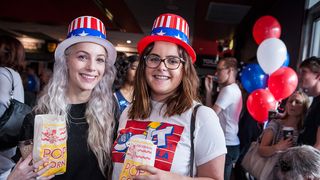Can competitions solve complex city-building problems? Could urban leaders in Australia make better use of them?
Many consider competitions unfit for tackling large scale problems facing cities. Hours of unpaid work are often poured into applications that don't bear fruit. Winning designs often fail to make it to the implementation stage, meeting resistance from actors not included in the process earlier on.
The Future Cities Collaborative and AECOM recently hosted Jessica Lax from the Van Alen Institute, a 120 year old non-profit based in New York City dedicated to improving design in the public realm. The Institute divides their work into three areas: public programs, research and competitions.
Lax is the Associate Director of Competitions at the Institute, and shared her insights with members and guests of the Future Cities Collaborative including attendees from the City of Canada Bay, Randwick City Council and Waverley Council, represented by Mayor Sally Betts, as well as planners, academics and architects. The audience were keen to understand how the Institute has used competitions to transform precincts and cities around the United States.
A key point Lax raised was the Institute’s interdisciplinary approach. What drew her to the organisation in the first place was “the ability to be an unbiased party connecting folks”. The Institute works with a diverse mix of social scientists, designers, engineers, architects and government. While competitions are historically a model borrowed from the design field, the Institute’s approach struck a chord with urban leaders in the room.
Besides engaging the right stakeholders, Lax explained that the Institute works closely with teams on their proposals to make sure they are robust and useful, and that their labour is compensated. They also follow up projects with key findings that non-specialists can understand and access.
Professor Ed Blakely facilitated a dynamic Q&A between Lax and attendees who talked about challenges and successes they’ve encountered in Australia.
Randwick City Council has just completed a design-ideas competition (“K2K”). Joanna Hole, Coordinator Strategic Planning at the Council, asked about keeping costs down especially in terms of larger scale projects like town centres and place-based designs. Lax’s response was that competitions are value-for-money. “I think it’s worth the added value of having multiple perspectives.”
Hole’s question prompted a discussion about communication and how to translate the benefits of non-traditional models to government and the community.
“One of the big challenges politically at a local government and also state government level is how much money is spent on the planning and design process versus actually implementation and long term asset management. Politically, and for residents, that’s where the balancing act is...it’s about bringing them along on the journey.”
Mayor Betts of Waverley raised the issue of complexity. “We have difficulties when we have two ideas and we like half of one and half of the other.”
Lax hinted that the solution lies in how we conceptualise cities. “It’s important to think about cities holistically. If you are starting to just pull out ideas one by one...there may be something interesting there...but you’re not thinking about the city as an organ.”
As a tool for improving cities, it was clear that competitions have huge potential. Is there a place for an institute like Van Alen in Australia? Attendees definitely expressed an appetite for an organisation that was independent and not aligned with any industry.
The Future Cities Collaborative was delighted to engage Jessica Lax in a conversation that got people thinking about competing models for transforming cities.








